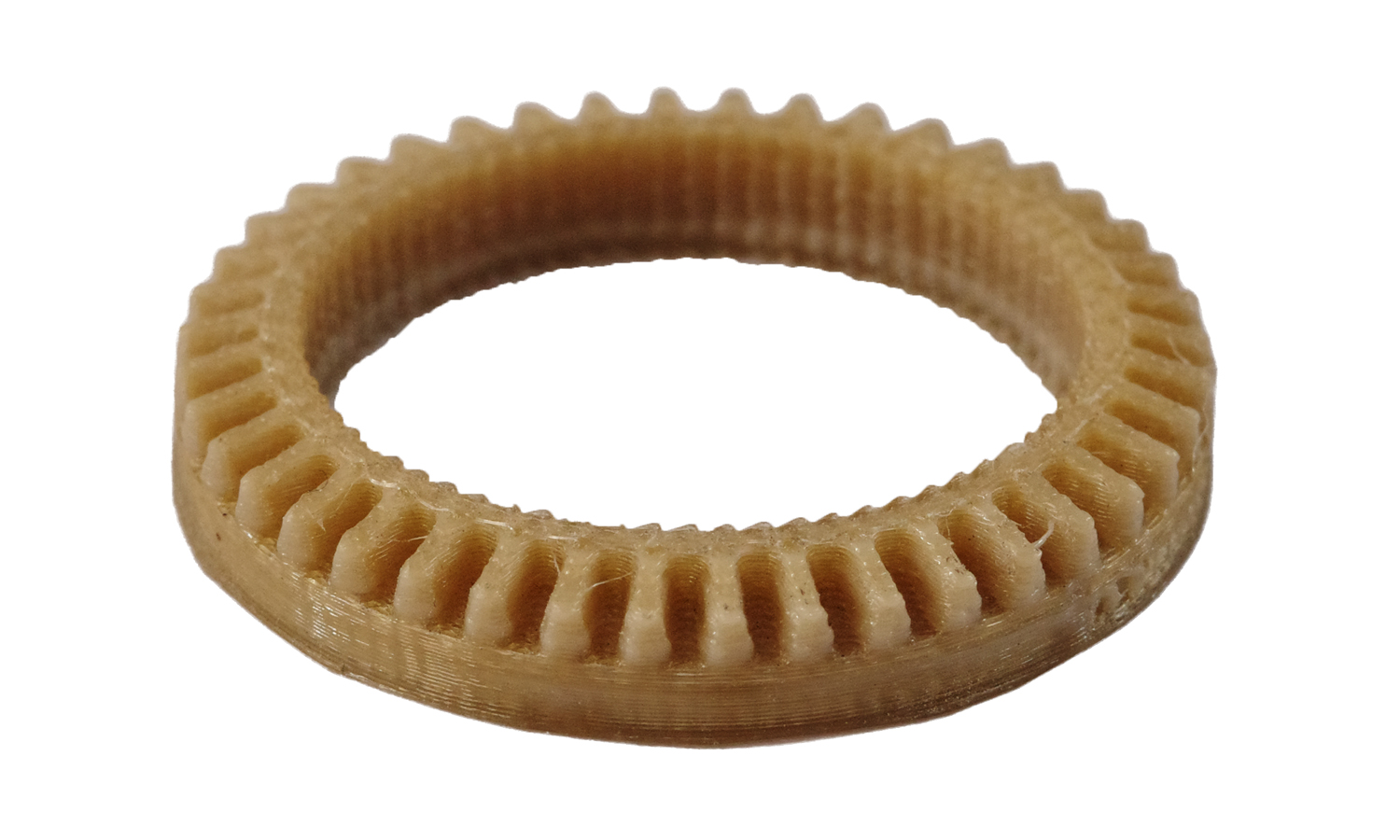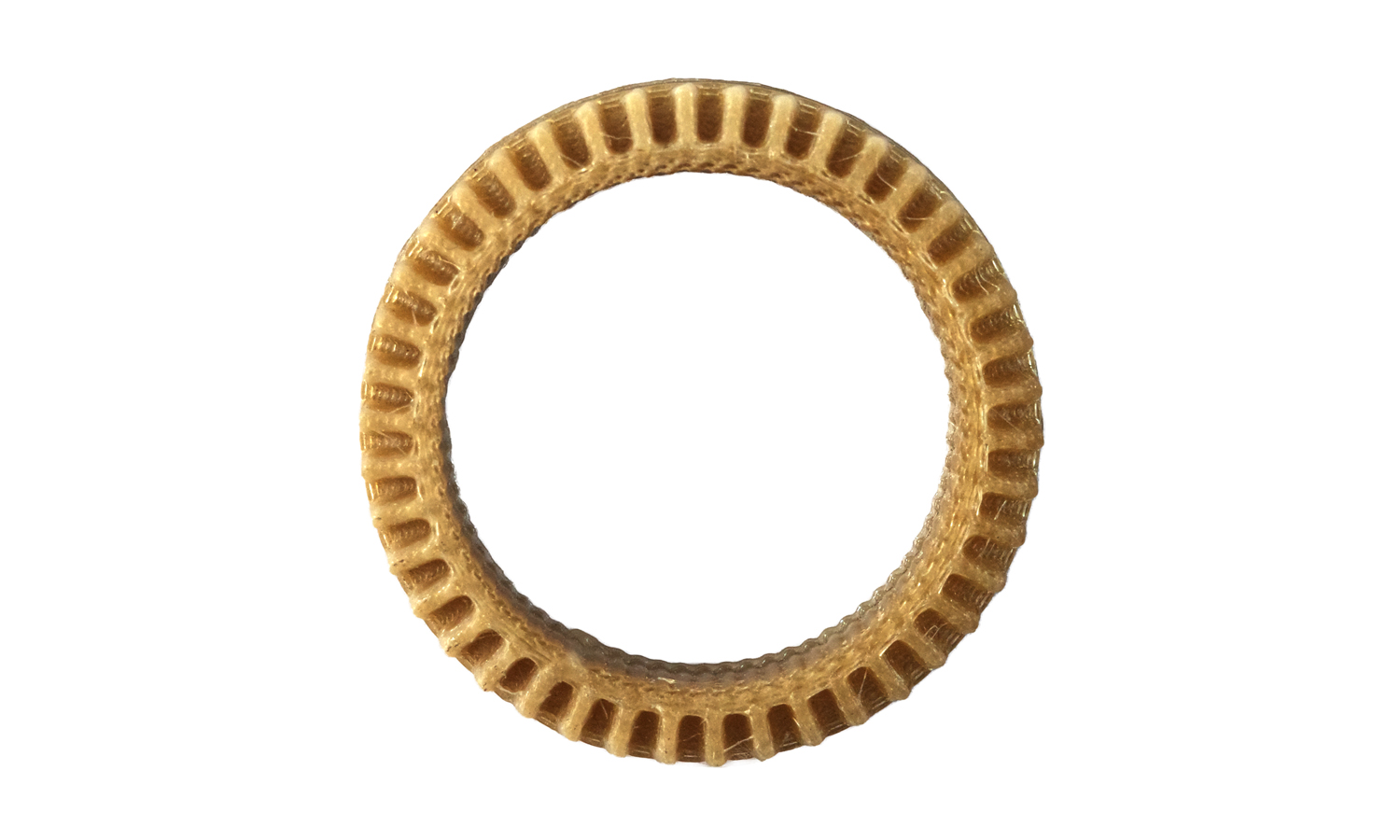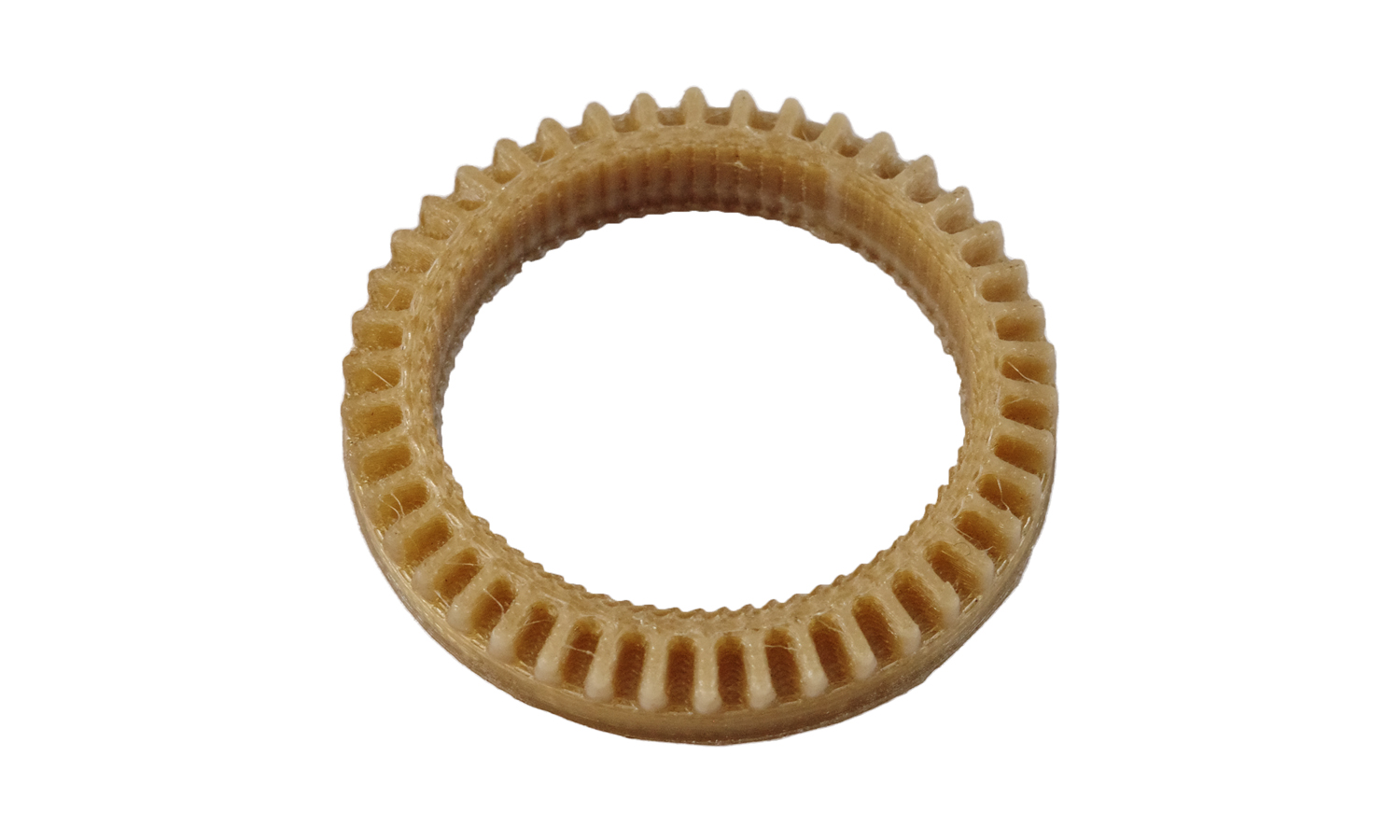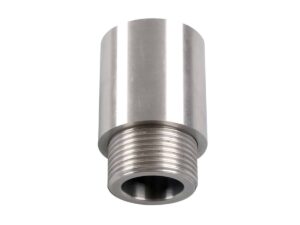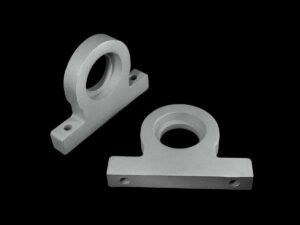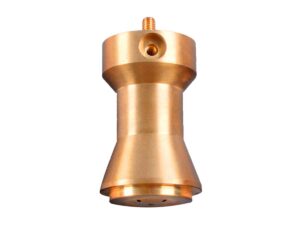- FDM 3D Printed PEEK Bushing Cylindrical Sleeve
- SLS 3D Printed TPU Squeezable Hollowed Flower with Raw Finishing
Gallery
About Project
Are you looking for a high-performance material that can withstand extreme temperatures, chemicals and mechanical stress? Do you want to create complex and precise parts that are lighter than metal? If so, you might be interested in FDM 3D printing with PEEK.
PEEK, or polyetheretherketone, is a semi-crystalline thermoplastic polymer that belongs to the poly-aryl-ether-ketone (PAEK) family. It has a melting point of 343б╟C, a tensile strength of around 100 MPa, and a YoungБ─≥s modulus of around 4 GPa. It is also highly resistant to thermal and chemical degradation, making it suitable for many demanding applications in aerospace, automotive, military, oil and gas, and chemical industries.
This PEEK sample part, the gear ring, has an amber color. The printing effect of PEEK is inferior to other FDM filaments because of the material itself: PEEK has a high viscosity and low melt flow index, which means it does not flow easily through the nozzle and tends to form blobs or strings on the surface. These defects can be minimized by optimizing the printing parameters and post-processing the parts, but still common for tiny parts.
Despite the challenges, FDM 3D printing with PEEK still has many strengths that are preferred by clients. PEEK is one of the most durable and versatile materials available for 3D printing. It can offer excellent mechanical, thermal, and chemical properties that are comparable or superior to metal. It can also reduce the weight, cost, and complexity of parts that would otherwise require machining or molding.
FacFox offers PEEK 3D printing services for various applications, such as seals, gears, bushings, bearings, and pump and compressor components. FacFox uses advanced FDM 3D printers that can handle high-temperature materials like PEEK with precision and accuracy.б═If you are interested in FDM 3D printing with PEEK or want to order a free sample part of the PEEK gear ring, please visit FacFoxБ─≥s website at https://www.facfox.com/ and get an instant quote via info@facfox.com today!
Solution
- Step 1: A spool of PEEK filament was loaded into the FDM 3D printer. The filament was fed through an extruder that heated, melted, and extruded the plastic through a thin nozzle.
- Step 2: A digital design file of the gear ring was uploaded to the printer and translated into physical dimensions.
- Step 3: The printer extruded melted PEEK material in thin strands and deposited them layer by layer along a path determined by the design. The extrusion head moved across the X, Y and Z axes to create the complex geometry and fine details of the part.
- Step 4: The printer adjusted the nozzle and chamber temperature, print speed, and layer height to optimize the printing parameters for PEEK. The printer also used fans to accelerate cooling of the material after deposition.
- Step 5: The printer filled an area by making multiple passes, similar to coloring in a shape with a marker. When the printer finished a layer, the build platform descended and the machine began work on the next layer.
- Step 6: The printer repeated this process until the entire gear ring was completed. Then it was examined and prepared for post-processing.
